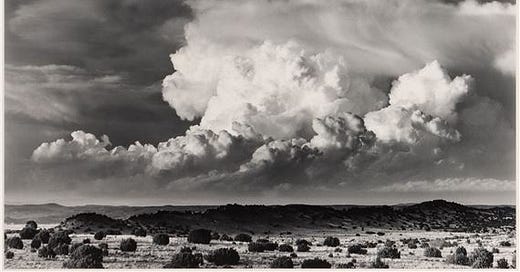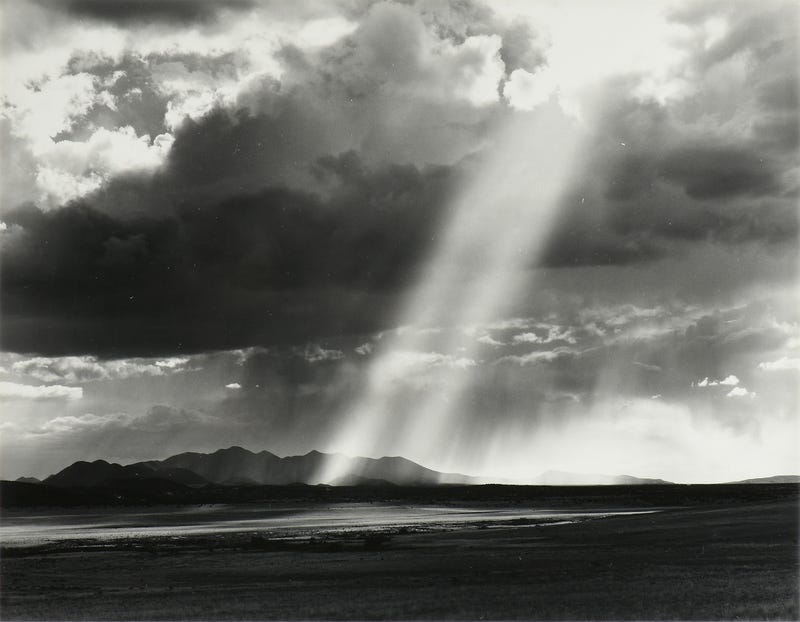By Brian D’Ambrosio
Twice yearly, Nicholas Trofimuk’s family would pack up their 1939 brown Pontiac Chieftain and leave home in New Jersey to visit relatives in western Pennsylvania. That’s when the beauty of the natural world first became clear for young Trofimuk.
“Tall evergreens with light filtering through, the rolling farmland with red barns posted with ‘Mail Pouch Tobacco’ signs, the crystal-clear streams cutting their way through magnificence forests – I realize now that the romantic nature of the world had claimed me as its victim at an early age,” said Trofimuk, now 84, with decades of professional photography behind him.
His work began with a chance encounter. Trofimuk visited the Museum of Modern Art in New York City where he saw an exhibit of black and white photographs by the masterful Ansel Adams. Many of the photos focused on Adams’ years spent in the Yosemite Valley of California. As in the car rides of Trofimuk’s youth, he was awed, the event instilling in him an appreciation of photography as a medium that could not only capture miraculous instances but also retain otherwise lost moments.
Though Trofimuk majored in chemistry in college and would spend more than 20 years as an oral surgeon in New Jersey, he never let his artistic longing dissipate.
After seeing the Adams show in New York City in the early 1970s, he bought a Deardorff 4×5 wooden field camera, set up a darkroom, and set out to capture something beautiful that he could present to the world.
About a decade later, Trofimuk closed his oral surgeon practice out East, and in search of a vibrant art community, he and his wife, Joette, moved into an old schoolhouse in Galisteo, N.M. From there, he became more proficient in his chosen art form and started a second career.
Throughout the decades, he has taken many thousands of photographs, emphasizing staggering landscapes and mountains, haunting skies, and stretches of open, seemingly untouched topography. His landscapes have been singled out for their distinct and raw depiction of the New Mexico terrain, although he has a large body of work accentuating trips to exotic places outside of the United States, too.
Indeed, since the move to Galisteo, Trofimuk has fully embraced New Mexico, heralding it as one of the most beautiful and inspiring places in the world for photography.
“John Wayne’s ‘The Cowboys,’ ‘Lonesome Dove,’ ‘Wild, Wild West, and about 20 other cowboy movies have been filmed here (in Galisteo) because of the beauty,” Trofimuk said. “For us, it was like moving to a fantasyland.”
In the late 1980s, the Trofimuks opened Photogenesis-A Gallery of Photography inside La Fonda on the Plaza in Santa Fe. The hotel often featured his work and the choice imagery of other national and international black and white film photographers.
Joette Trofimuk, whom Nicholas describes as “the very best critic” with a keen eye for his work, died in August 2023. Shortly thereafter, he closed the gallery in Santa Fe, choosing to work from their Galisteo home, where her spirit forever imbues the essence of his art and intention.
“I had the privilege of enjoying the greatest life with the greatest woman,” Trofimuk said. “We spent decades together seeing all of these beautiful things in beautiful settings.”
Quoting from American painter Robert Henri’s book “The Art Spirit,” Trofimuk described beauty as “the sensation of pleasure on the mind of the seer. No thing is beautiful. But all things await the sensitive and imaginative mind that may be aroused to pleasurable emotion at the sight of them. This is beauty.”
The creative process of film-based photography, the stages from time on the ground to the development of the negative, to the test exposures, to the final choice of toners – these are some of the things that Trofimuk says have electrified him the most about it. Though he now dabbles with digital photography and experiments with color, he says that only black and white gives him a real sense of purpose and direction.
“Black and white photography, to me, has always been about the feeling and the embodiment and the recognition of all things of beauty, like the Henri quote,” he said. “Color photography might be more visual, but black and white contains much more feeling. I’m not a photographer who records things, but one who recognizes the work as searching for things of beauty.”
Brian D’Ambrosio is a prolific writer and author of non-fiction and is always scanning and scavenging the environment for irresistible subjects and story ideas. He may be reached at dambrosiobrian@hotmail.com





